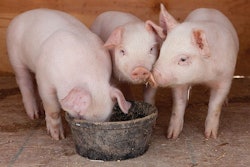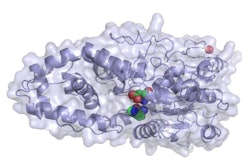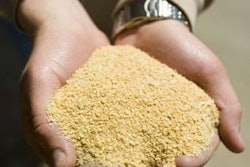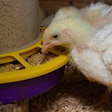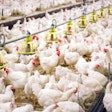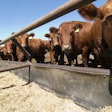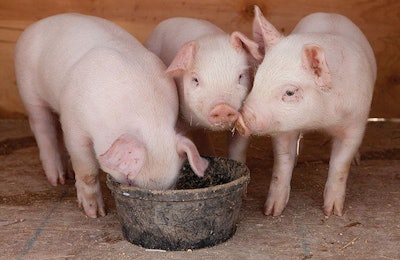
In a recent trial, an attempt at very low protein diets failed to sustain growth performance, although it curtailed diarrhea – both as expected.
I just reviewed a study by a well-known research institution in which the researchers tested extremely low protein levels as a means of combatting post-weaning diarrhea without zinc oxide. This was a study done in anticipation of the 2022 ban on zinc oxide used at pharmacological dosages. As it stands, pig producers in many EU countries continue to use, officially or not, zinc oxide as the main weapon against post-weaning diarrhea.
Low-protein diets indeed reduced diarrhea, something we already knew, but it is always refreshing seeing established knowledge, even basic one, being verified under modern conditions. What they also observed, not without some surprise, is that very low protein diets also reduced growth rates in pigs. I am not sure why they were surprised, but I can offer some insights as I have spent a good part of my career on protein and amino acids.
A typical piglet diet contains about 22% crude protein. This comes from major protein sources such as soybean meal. This protein provides all required amino acids, but some are not enough. For that, we add feed-grade amino acids that are almost pure. We all know them as L-lysine HCl, DL-methionine, etc., only to mention two very common ones.
It is possible to make a diet without feed-grade amino acids, but this would require very high levels of protein, which takes us to the opposite direction of where we want to go: down. So, research has clearly demonstrated that we can reduce crude protein levels in the above feed by two percentage points (that is from 22% down to 20%) without any problem. We only need to slightly increase the usual feed-grade amino acids to cover the animal needs. In fact, if we monitor amino acids closely and use conventional ingredients, we can safely reduce crude protein by a further two percentage units, that is, down to 18% for the same feed. This is better done by a qualified nutritionist.
When we depart from the above and we want to lower crude protein even further, we need to introduce novel feed-grade amino acids such as L-valine, L-isoleucine. And, even then, we are not absolutely sure we will succeed because requirements are not well established for these less commonly monitored amino acids. I recall in my Ph.D. work, it took me three trials (that I never published) to establish a valine-deficient diet in order to study afterwards the valine requirements of young pigs. So, it takes a very well-versed nutritionist to attempt very-low protein diets and, even then, results are not guaranteed. At least, the above experience verified all these, once more.



